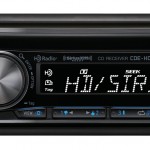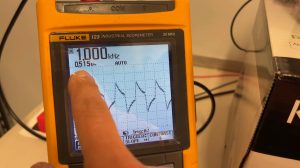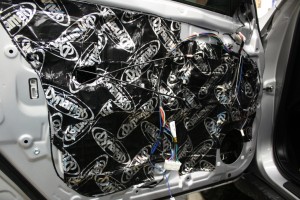You may be wondering, what the hell is time alignment and why do I need it?
Time alignment is freaking awesome. Basically, when you’re sitting in your car, typically the left speaker is going to hit your ears first. Then the next closest speaker, like the rear driver’s side. Next is usually the front passenger speaker and last is probably the passenger side rear speaker. You might not have realized it up until this point, but the slight delay in when the sound waves actually reach your ears greatly effects your sound stage and your overall listening experience.

Digital time alignment allows you to digitally delay the closest speakers so that every speaker reaches your ears at the same time. It’s awesome. When set up properly, you can sit in the driver’s seat, close your eyes (not while driving) and you will NOT be able to pinpoint where the music is coming from. It will envelop and surround you creating a truly sublime listening experience.





4 Comments
How do you tune for speakers in the center no console? So 4 pa 6.5s and 2 supertweeters in a box facing the roof in the center on the floor. No door speakers or rears just front center stage. How would I t/a this setup?
You wouldn’t. I guess theoretically you could time align a chuchero box, but only if you are using like a 6-channel amp that you would be running off a head units front, rear and sub pre-amp output. Call one tweeter the front left, another one the front right, one set of 6.5’s could be the rear left & rear right and the last set of 6.5″s would be labeled as subs. I don’t know how effective it would be, but if you’ve got it set up that way and your head unit supports it, it wouldn’t hurt to try and see how it sounds.
Hii Annie…i been following ur guidance and reading almost every article of urs…i am stuck to one point thts time alignment..i really need ur help to fix up dis issue..i am using pioneer AVH 8690BT.
1.What to do with sub while performing ta, i mean on or off
2.what is the relation between TA and Speaker level which is from -24db to +24 db..
3.How to deal with speaker level becoz aftr time alignment speaker level also changes
4.Really i have gone mad about TA and Speaker level..
Hi Dr Dar – yes time alignment is the kind of thing that can drive you mad and you can spend HOURS perfecting it. You know every head unit manufacturer calculates it slightly differently. Some tell you to measure from where you sit to the speakers and plug that number in – others have you measure the difference and delay the closest speakers by the difference from the speaker that is furthest away.
Even when “properly set” time alignment can do funny things with the phase. Speaker level is simply like individual gain adjustments for each channel. Kind of like subwoofer level adjustment, but for each speaker individually. So if even with time alignment properly set, you still find that front left speaker is more noticable in output compared to the front right, you can fine tune and reduce the level slightly so it’s more blended with the front right.
I don’t have a head unit in front of me to try this on, but the manual seems to state that if you change the listening position, (“off”, “front left”, “front”, “all”), the output settings of all the speakers will change in conjunction with the setting. So if you’re trying to do manual time correction, maybe set this to “off” then try doing the manual time correction?
If it’s driving you mad and you can’t get it exactly right, here is the approach I recommend. I usually do this by ear and find it works better this way. Fade to the front so only the front speakers and sub are playing. I would leave TA on for the sub, we want to time correct that too. FYI Pioneer’s time alignment is based on plugging in the distance from your head to each speaker. It’s helpful to play a track with strong vocals that also has a good bass line/drum line – usually woman vocals are easy to focus on.
So with front and sub playing, begin focusing on the strong vocals and start delaying that front left speaker until you begin to hear the woman’s voice shift dead center in front of you. Once you get that centered in front of you, begin adjusting the sub until you start to hear and feel it up front. This is one of the reasons I prefer to do a front sound stage. If you can get this correct you will not miss rear fill. If you desire rear fill, you should probably really measure the distance so you have a good idea of where they should be, but still tweak it based on sound once you have the front and sub perfected. I’ve always found it sounds better when done by ear like this. I hope that was helpful.